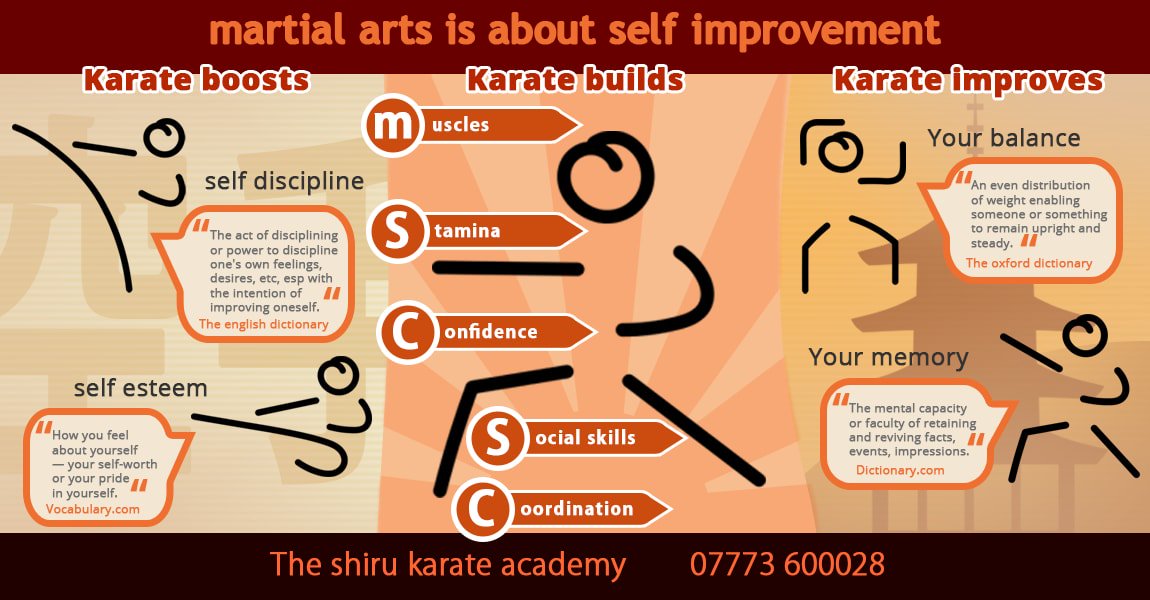Untangling The Mystery Of Numerous Martial Arts Techniques: A Guide To Martial Arts, Taekwondo, And Much More
Untangling The Mystery Of Numerous Martial Arts Techniques: A Guide To Martial Arts, Taekwondo, And Much More
Blog Article
Developed By-Becker Haastrup
Are you tired of sensation overwhelmed by the vast world of fighting styles? With numerous designs to choose from, it can be easy to get lost in a sea of punches, kicks, and mystical names. But worry not!
This discussion will debunk the different fighting styles designs, taking you on a journey from the powerful strikes of Martial arts to the dynamic kicks of Taekwondo. Prepare yourself to discover the origins, strategies, and approaches behind these old art kinds.
So, tighten your belt and prepare to start an enlightening exploration into the exciting world of martial arts.
Beginnings of Martial Arts Styles
The beginnings of martial arts designs can be traced back to ancient civilizations and their demand for self-defense and combat techniques. Throughout https://themalaysianreserve.com/2020/08/12/a-peek-into-the-world-of-japanese-martial-arts/ , different cultures developed their own unique techniques of fighting, each with its own set of strategies and philosophies.
In China, for example, fighting styles designs such as Martial art and Tai Chi were developed as a means of protection and boosting physical and mental wellness.
In Japan, the samurai warriors created styles like Karate and Judo, concentrating on discipline, accuracy, and proficiency of the body.
In fighting classes for adults near me , in Korea, Taekwondo became a martial art highlighting high kicks, rapid motions, and psychological perseverance.
These early people laid the structure for the varied array of martial arts designs that exist today, each with its very own rich background and cultural value.
Strategies and Training Approaches
To understand fighting styles designs, practitioners need to discover different methods and training approaches.
Strategies are the details motions and actions utilized in fight, such as punches, kicks, throws, and obstructs. Various fighting styles designs have their own distinct set of techniques that experts have to grasp with strenuous training.
Training methods differ depending upon the design, yet they usually involve a mix of physical fitness, drills, competing, and types.
Physical conditioning is essential to build toughness, versatility, and endurance. Drills aid professionals fine-tune their strategies and enhance their speed and accuracy.
what is the best martial art for real life situations permits experts to practice their strategies in a regulated, practical environment. Kinds, also called kata, are ironclad series of movements that aid specialists create muscular tissue memory and focus.
Viewpoints and Concepts
Checking out the approaches and principles of fighting styles designs can give you with a much deeper understanding of your picked self-control. Each fighting style has its own special approach and set of leading principles that shape the means it's exercised.
For example, Karate highlights technique, regard, and self-constraint. It shows experts to concentrate their minds and bodies, allowing them to safeguard themselves while keeping a sense of internal tranquility.
On the other hand, Taekwondo puts a solid focus on speed, dexterity, and flexibility. Its principles are rooted in the tenets of politeness, honesty, willpower, self-control, and resolute spirit.
Final thought
Since you have actually discovered the origins, strategies, and ideologies of different martial arts designs, you have a deeper understanding of these ancient self-controls.
Imagine a young karate trainee, practicing with undeviating decision and focus, breaking through boards with an effective strike.
Their journey showcases the devotion and toughness called for to master a fighting style, reminding us that with discipline and determination, anything is feasible.
